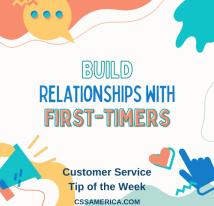For most of the United States, this is a time when students are going back to school. But when we refer to students, whether they be college kids or the elementary school age children, we need to keep in mind that the students are not going back to the same grade. Last year’s 3rd graders are now 4th graders. Last year’s college freshmen are this year’s sophomores. The students are moving on and moving up.
So when kids go back to school, they’re going back to learn more advanced information.
In our business world, we also need to constantly go back to school. But it’s not to get refreshed on what we already know or retrained on information where we’ve already been trained. It’s to learn advanced techniques, tips, skills, philosophies, and business practices.
In customer service, there are so many different techniques which you can learn and apply daily. But for those who need more advanced training if they have become near-experts on the basics of customer service, one area to focus on is reading the personality of your customer. Since many of our conversations with customers are quite short, and since we’re conveying so much information or responding to the request or complaint while engaged with a customer, to be able to – at the same time – tailor how you interact with the customer to their unique personality type is a feat where only the best at customer service consistently excel.
One way to build up this aptitude is to start categorizing the personality types of the customers you encounter most frequently. Identify the 2-3 most encountered personality types, determine how to identify these types of individuals during conversations, and determine a few behaviors or phrases that you can utilize when interacting with these particular personality types. Getting to know the types of customers you interact with and the keys to interacting with them are great steps to take if you want to be even better at customer service.
Go back to school.
Interested in improving your company’s customer service? See more information at: http://www.cssamerica.com/
Check out our new customer service book at http://www.amigreatat.com/





















